Every Saturday morning, Patricia, a longtime resident of San Francisco, walks or busses with her Chihuahua to our partner food pantry at Grace Fellowship Community Church. Sometimes her friend Lester joins her, but when we met her last month, it was just her and her dog. Patricia has been receiving food from Grace Fellowship for four years now, and the pandemic made her situation even more challenging. “When I couldn’t come to the pantry, oh, I was heartbroken. We [in my senior facility] were sharing food… I had to look in my cabinets for things that my dog could eat. It saves me so much, because I can’t afford things. I have to pay for my electricity and things, so there’s a lot of expenses.”
The Senior Hunger Landscape
Everyone needs a little bit of help as they grow older, whether by asking a grandkid or a neighbor to mow your lawn or having a friend pick up a few things at the store. But as everyone in the Bay Area knows, living in San Francisco or Marin is expensive. High housing prices and a steep cost of living mean that balancing expenses can be challenging, especially if you’re living on a fixed income such as Social Security disbursements like many seniors are. The unfortunate reality is that seniors are at a high risk of being forced to choose between food, bills, and medical expenses. Feeding America recently reported that California’s senior hunger rate has hovered at 8.4% in 2018 and 2019. We don’t have official data yet on the impact of COVID-19 on senior hunger rates, but we can infer that affording food hasn’t gotten any easier. We recently surveyed over 7,000 participants and learned that more than 80% of them have yet to recover from the economic impacts of COVID-19, and recent problems in the global supply chain have made the prices of food rise in recent months.
By getting food assistance, Patricia can pay her expenses while also improving her health. She, like many seniors, has a few health issues that poor nutrition makes more complicated. It’s the variety and type of food Patricia gets from Grace Fellowship that Patricia really appreciates. “I make smoothies out of the fruit and juice the celery. It’s really good for your intestines. And out of the rice, I make congee [rice pudding], or I make rice and I put whatever vegetables and chicken I got from the pantry in there. So you can make a lot of different things.”
Our Partners Serving Seniors
Patricia is one of a community of seniors that the Food Bank, and our partner Grace Fellowship, serve. “We have quite a span of ages, though I think it probably leans towards seniors,” said Karen Seth, a pantry coordinator at Grace Fellowship. “One thing I think that we have really treasured is the relationships that we build with our guests and that they see us week in and week out. They’ll tell us what we’re going through. Some people have struggled with cancer, some people have struggled with losing their jobs, some people have been in and out of the hospital. And so, they tell us those things and we can be here and hear them and see them and receive them, and this can be a safe place for them.”
It’s thanks to our supporters that we’re able to help our community and provide them with food that nourishes them and makes their lives better. This benefit extends beyond our participants. Rashmi, a volunteer at Grace Fellowship, told us, she loves coming to our partner pantry every Saturday. “I look forward to coming here,” she said. “I like giving food to the elderly and I feel happy when I give them extra food because I know them, and I know they are using the food.”


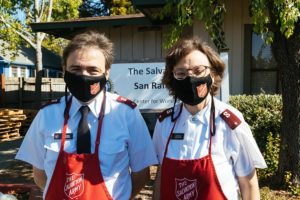 Soup. Soap. And Salvation. Since 1865, The Salvation Army has taken a holistic approach to serve those with the greatest need in our community. According to Diane Shatto, a Lieutenant and ordained minister at San Rafael’s branch of The Salvation Army, you can’t nourish people’s spirits until you nourish them with food. “That’s why our food pantry and home-delivered groceries are key activities for us.”
Soup. Soap. And Salvation. Since 1865, The Salvation Army has taken a holistic approach to serve those with the greatest need in our community. According to Diane Shatto, a Lieutenant and ordained minister at San Rafael’s branch of The Salvation Army, you can’t nourish people’s spirits until you nourish them with food. “That’s why our food pantry and home-delivered groceries are key activities for us.”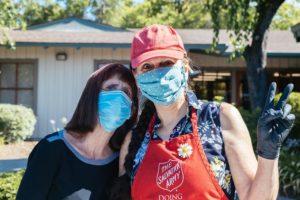 Carol Gotti has been volunteering with the Salvation Army’s food program for over ten years, and the participants are a lot more to her than names and numbers. “I’ve gotten to know about people’s lives, and you get a feeling about the things that bring people joy,” she said.
Carol Gotti has been volunteering with the Salvation Army’s food program for over ten years, and the participants are a lot more to her than names and numbers. “I’ve gotten to know about people’s lives, and you get a feeling about the things that bring people joy,” she said. 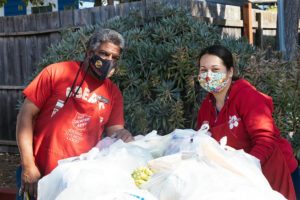 “I was the second youngest of five children with three older brothers who were always more aggressive than me about grabbing the food at dinnertime. I had hunger pains all the time, and other kids at school would make fun of me because I was skinny. It makes you feel inferior, you lose motivation, and you lose hope. And that’s how the cycle of poverty continues.”
“I was the second youngest of five children with three older brothers who were always more aggressive than me about grabbing the food at dinnertime. I had hunger pains all the time, and other kids at school would make fun of me because I was skinny. It makes you feel inferior, you lose motivation, and you lose hope. And that’s how the cycle of poverty continues.”
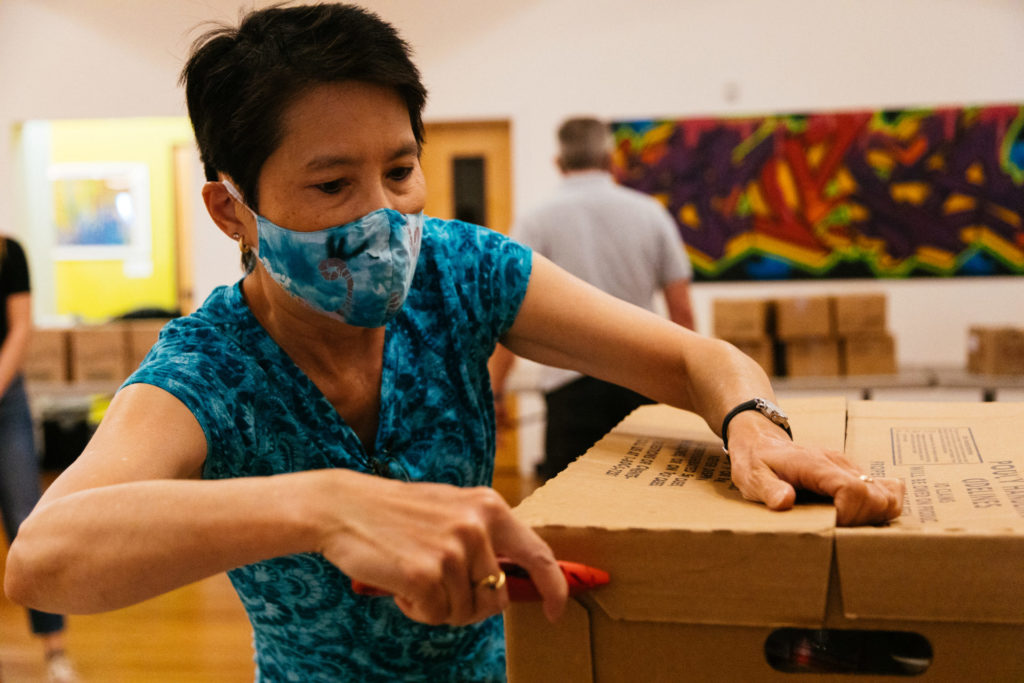
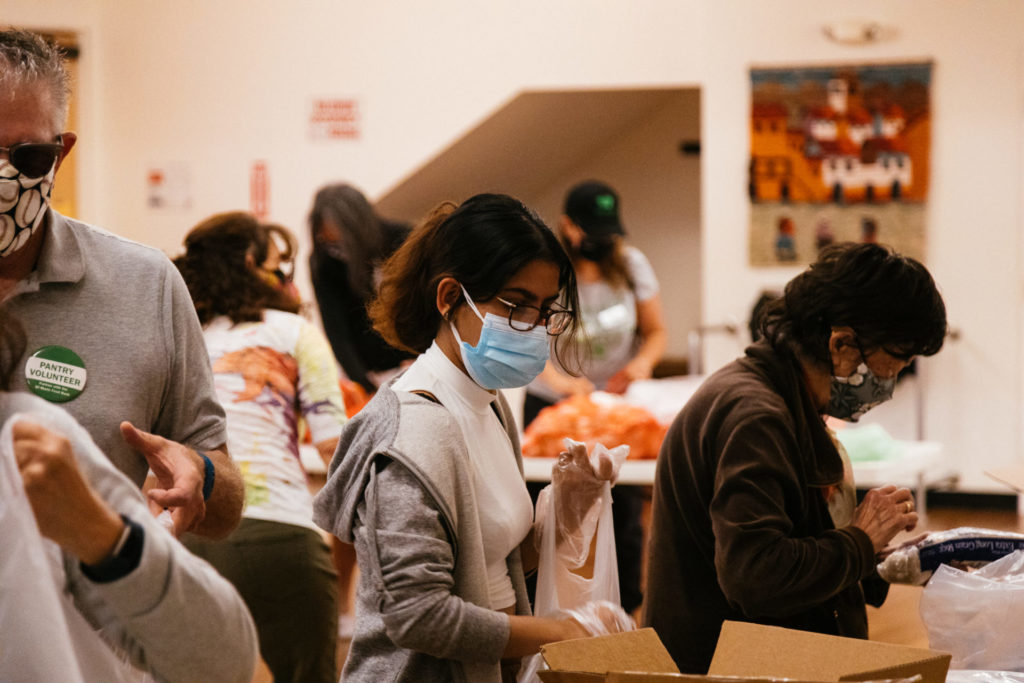
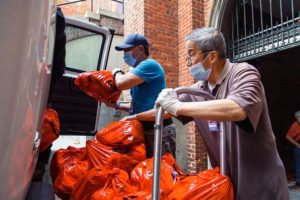 Groceries for Seniors operates out of the church basement where “each week, we create over 1,100 bags that we distribute to low-income seniors throughout the San Francisco area,” said Tim Thompson, who coordinates the deliveries. “We’re delivering about 240 to 250 bags per day.”
Groceries for Seniors operates out of the church basement where “each week, we create over 1,100 bags that we distribute to low-income seniors throughout the San Francisco area,” said Tim Thompson, who coordinates the deliveries. “We’re delivering about 240 to 250 bags per day.”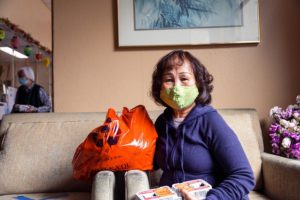 By around 10:30 in the morning, with the back of his van fully loaded, the delivery driver heads out to deliver the grocery bags. On Mondays, they deliver to Mei Lun Yuen, an apartment building in Chinatown that houses mostly low-income seniors and families of Chinese descent.
By around 10:30 in the morning, with the back of his van fully loaded, the delivery driver heads out to deliver the grocery bags. On Mondays, they deliver to Mei Lun Yuen, an apartment building in Chinatown that houses mostly low-income seniors and families of Chinese descent.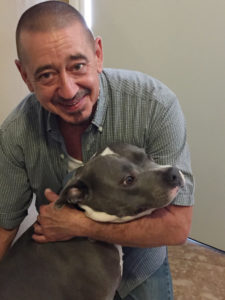 Fourteen years ago, Dru Devoe got on his Harley Davidson motorcycle and left his home in Florida with only clothes and whatever he could fit in his saddlebags. He landed in the Bay Area and eventually settled in Marin County.
Fourteen years ago, Dru Devoe got on his Harley Davidson motorcycle and left his home in Florida with only clothes and whatever he could fit in his saddlebags. He landed in the Bay Area and eventually settled in Marin County.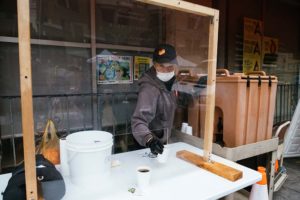 On a cold, damp San Francisco morning in late June, Clifford, William and Tommy sat together eating breakfast and sipping coffee in the parking lot of
On a cold, damp San Francisco morning in late June, Clifford, William and Tommy sat together eating breakfast and sipping coffee in the parking lot of 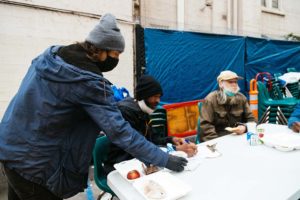 Food is central to creating community. When we can come together around a shared meal, we build connections, we foster understanding, and we grow together. And this isn’t true just of a family dinner or a special holiday celebration—meal programs like Glide’s are part of the fabric of our community.
Food is central to creating community. When we can come together around a shared meal, we build connections, we foster understanding, and we grow together. And this isn’t true just of a family dinner or a special holiday celebration—meal programs like Glide’s are part of the fabric of our community. 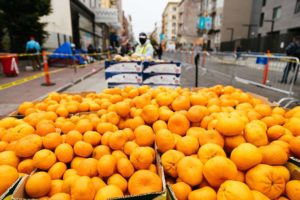 “People come to Glide where they receive breakfast, lunch and dinner, with much of the food coming from the Food Bank
“People come to Glide where they receive breakfast, lunch and dinner, with much of the food coming from the Food Bank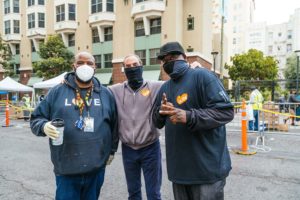 Another COVID innovation is the Monday Pop-Up pantry on Ellis Street. Every Monday, the Food Bank and Glide work in close collaboration to thoroughly clean Ellis Street and set up a pantry where people can safely come and choose healthy food for themselves and their families. Since many in the neighborhood don’t have cooking facilities, the Food Bank provides foods that require little or no cooking.
Another COVID innovation is the Monday Pop-Up pantry on Ellis Street. Every Monday, the Food Bank and Glide work in close collaboration to thoroughly clean Ellis Street and set up a pantry where people can safely come and choose healthy food for themselves and their families. Since many in the neighborhood don’t have cooking facilities, the Food Bank provides foods that require little or no cooking.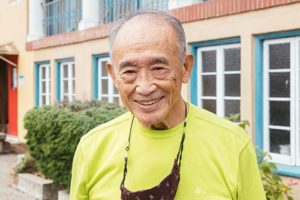 Covenant Presbyterian sits at the corner of 14th Avenue and Taraval Street and is deeply embedded in San Francisco’s Sunset District.
Covenant Presbyterian sits at the corner of 14th Avenue and Taraval Street and is deeply embedded in San Francisco’s Sunset District.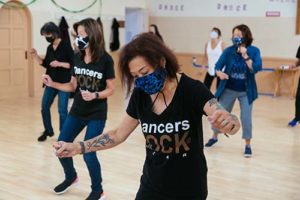 By 10:15 – just as dancers are making their way upstairs – volunteers are downstairs cleaning up the food pantry. Week three after a more than year-long hiatus everyone is excited to be back.
By 10:15 – just as dancers are making their way upstairs – volunteers are downstairs cleaning up the food pantry. Week three after a more than year-long hiatus everyone is excited to be back.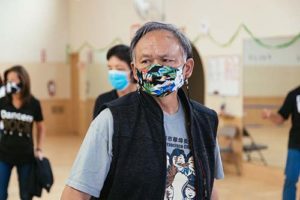 Just like the dance class, the pantry draws a loyal following of volunteers. Ranging in age from teenagers to over 90-year-olds, many have been coming since the pantry first opened its doors 15 years ago.
Just like the dance class, the pantry draws a loyal following of volunteers. Ranging in age from teenagers to over 90-year-olds, many have been coming since the pantry first opened its doors 15 years ago.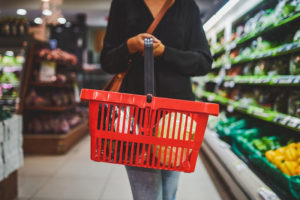
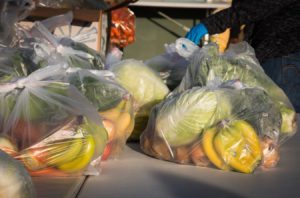 For
For
Share